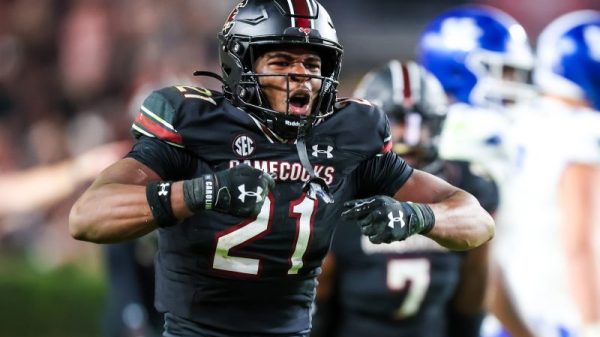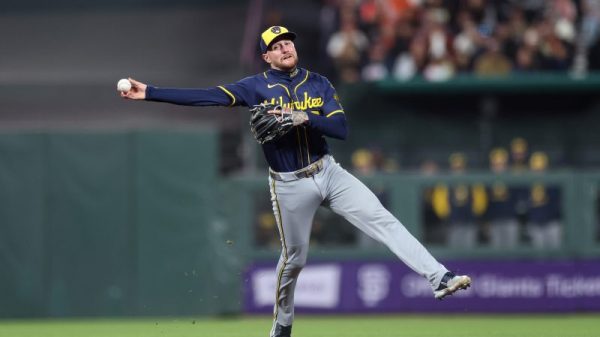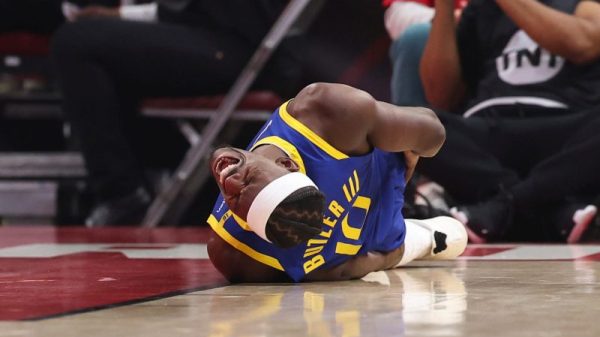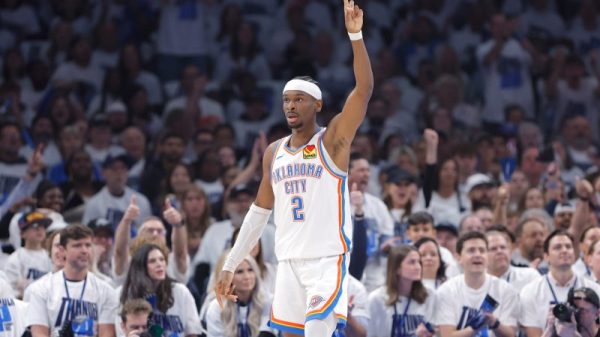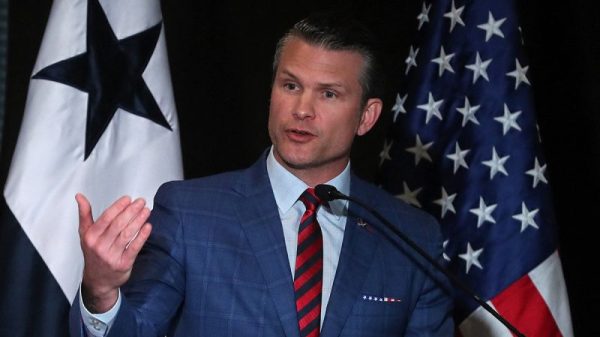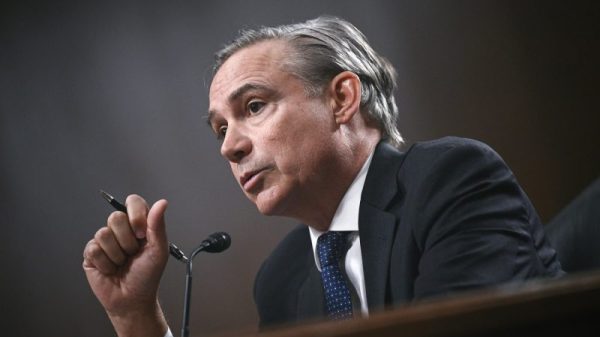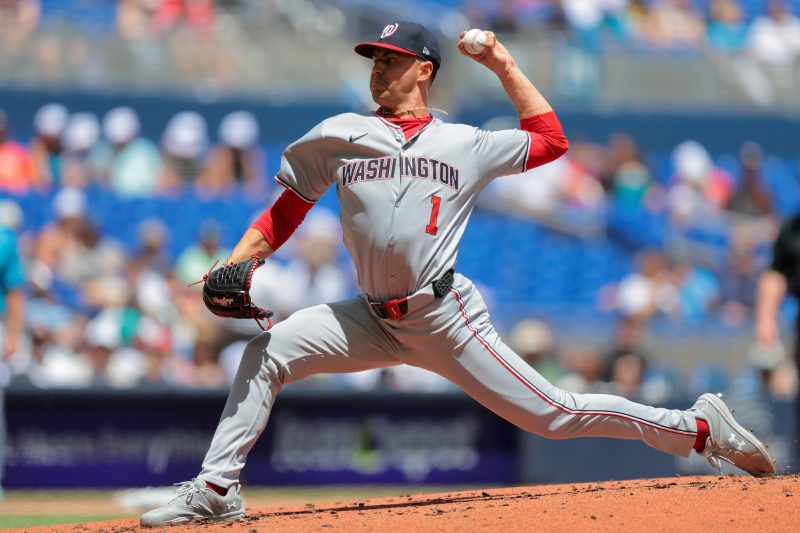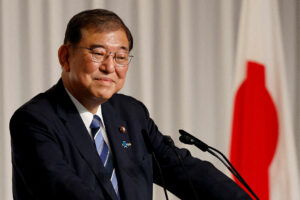
WASHINGTON – Jake Irvin gazes over at MacKenzie Gore’s stall in the Washington Nationals clubhouse and ponders the relative gifts bestowed upon and developed by major league pitchers.
There’s no sense in trying to disguise the differences between Washington’s ace and its other, more human starters, so Irvin steers into it.
“He’s got incredible stuff,” Irvin says of the lefty who has a pair of 13-strikeout games this season, averages 95 mph with his fastball and through five starts is displaying the All-Star pedigree expected of a former No. 3 overall pick.
“Does a lot of things that we don’t do.”
Yet there’s no jealousy in Irvin’s voice, not when the right-hander and his rotation mates are taking another methodical step forward and climbing the National League’s pitching charts – emphasis on the pitching.
“Velo’s great. But you gotta pitch,” he says. “You gotta keep guys off balance. Changing speeds wins more than anything.
“You can out-stuff guys. But at this level, you gotta pitch.”
And goodness, are the Nationals pitching – regardless of pedigree.
While Gore’s starts can produce a thunderclap of ball hitting mitt, the Nationals are slower and lower-key the rest of the week, producing weak contact and scoreboard zeros in equal measure and comprising, on a shoestring budget, one of the NL’s finest rotations.
They rank fifth in the NL with a 3.55 rotation ERA, led by arguably the league’s greatest success story this year – left-hander Mitchell Parker. The 25-year-old lefty’s 1.39 ERA ranks third in the NL, and on Wednesday reached a high-water mark: Eight shutout innings of one-hit ball against the Baltimore Orioles.
Like Irvin, Parker lives in a lower velocity district than Gore; both average 92 mph on their fastballs. Throw in veteran right-hander Trevor Williams, whose fastball now averages 87 mph, and the Nationals feature the only rotation in the major leagues whose Nos. 2-4 starters don’t reach 93 mph with their heaters.
Velocity doesn’t always win, but it almost always pays; the Dodgers feature the hardest-throwing foursome in the game in Yoshinobu Yamamoto (96 mph, $325 million contract), Rōki Sasaki (96 mph, $7 million rookie signing bonus), Tyler Glasnow (95 mph, $130 million deal) and Dustin May (95 mph, $2.14 million deal). For good measure, Blake Snell’s mending on the injured list with a $182 million contract after averaging 96 mph on his four-seam fastball a year ago.
The Nationals? They’re paying their front four a combined $11.4 million this season, a number that will balloon once Michael Soroka ($9 million) returns from the IL.
You could say they’re getting lots of bang for their buck, though that may overstate the snap of the ball hitting mitt most nights.
No fear
At 6-foot-4 and 240 pounds, Parker moves with a skosh less athletic grace than his rotation mates. Manager Dave Martinez keeps a keen eye on Parker during his starts, to make sure he’s utilizing the significant base in his lower half and not dropping his arm slot.
Yet if there’s one thing at which Parker excels, it’s listening and learning and doggedly applying what he gleans.
“I truly believe he worked his tail off to get here,” says Martinez of Parker, who debuted on April 15, 2024. “When I first saw him it felt like he had the ability to pitch up here. We didn’t know where – starter or reliever. But he had stuff. The biggest thing with him was to command the zone. You can’t pitch up here if you’re walking guys.
“He went and worked on it and gave us the confidence to say hey, let’s bring him up. Let’s see what he can do here. Since then, he’s been getting better with every outing.
“And he’s not afraid to throw the ball over the plate.”
That he did against the Orioles, moving east and west masterfully in the strike zone, striking out four but allowing just three baserunners. Both his curveball and slider play well against left-handed batters, and despite all the contact – Parker’s struck out just 20 in 32 ⅓ innings so far – he’s given up just one home run.
Parker parlayed his early call-up last year into a 29-start, 151-inning opportunity, then outlasted a handful of comers to grab the last rotation spot this spring.
Wednesday night, with a 92-mph fastball, he simply kept putting up zeroes.
“Just trying to go out on that little dirt hill out there and doing it over and over again,” he says, while hoping he simply passes that on to his rotation mates.
“It’s the confidence,” he says. “Pitching well keeps the confidence up and it’s contagious among the pitching staff when we’re all throwing well.”
A potential ace arrives
Developing pitching was a longtime bugaboo of general manager Mike Rizzo’s regime, what with World Series heroes Max Scherzer and Patrick Corbin imported as nine-figure free agents, and generational talent Stephen Strasburg a slam dunk No. 1 overall pick.
Yet the blockbuster trade for Juan Soto in 2022 netted Gore, an ace-profile arm the club lacked for years. The January 2024 hiring of former closer Sean Doolittle as pitching strategist significantly modernized the infrastructure at the big league level, just as Irvin, a fourth-round pick in 2018, and Parker (fifth round, 2020) were bubbling up.
And then there was Gore, who struggled with command and pitch efficiency along with harnessing that fastball he’d run up to 98 mph. He’s now operating a tick down on the radar gun, yet has completed six innings in four of his five starts, including those 13-punchout efforts on opening day against Philadelphia and Saturday at Colorado.
“With Doolittle coming in, with (pitching coach Jim) Hickey who’s been around a long time, we’ve got a great mix of being around,” says Gore, “and some forward thinking, and the other side of pitching. It’s a great mix and we’ve needed it. Those two together, that’s why we’ve all continued to improve as a player.”
It doesn’t hurt to have some esprit de corps. Even if Gore has a fifth gear to his heater, there’s no shortage of insider trading the group can partake in.
“Yeah, I throw harder than everyone else, but there’s shapes that are similar with offspeed pitches,” says Gore. “Mitchell has vert on the heater like me; definitely a different look but there are similarities.
“Understanding that when you do what you’re supposed to as a pitcher, you’ll have success.”
It’s translated into mixed results for the Nationals, who are 11-13 largely because their bullpen – whose 6.96 ERA ranks last in the majors – has betrayed them about as much as their starters have propped them up.
Nonetheless, developing reliable starting pitching remains the industry’s white whale. Irvin was the only pitcher in the majors to make 33 starts last season, throwing 187 ⅔ innings, and through five starts this year has shaved his ERA to 3.68.
A lot can change, but the Nationals have a strong foundation, regardless of which lane they choose to cruise.
“They’ve become very, very close. On and off the field,” says Martinez. “They do a lot of stuff together which is awesome. Those guys are always watching. They’re out there before the games watching bullpens and warm ups.
“In that clubhouse, they’re very close. It’s awesome to see.”
The USA TODAY app gets you to the heart of the news — fast. Download for award-winning coverage, crosswords, audio storytelling, the eNewspaper and more.

